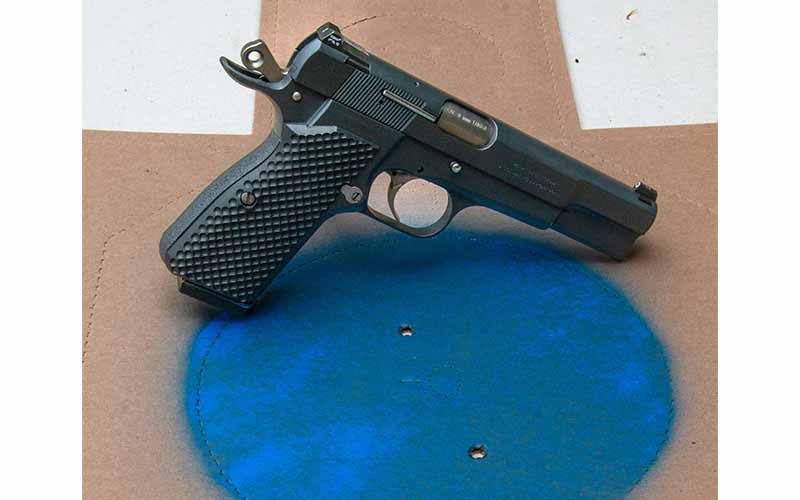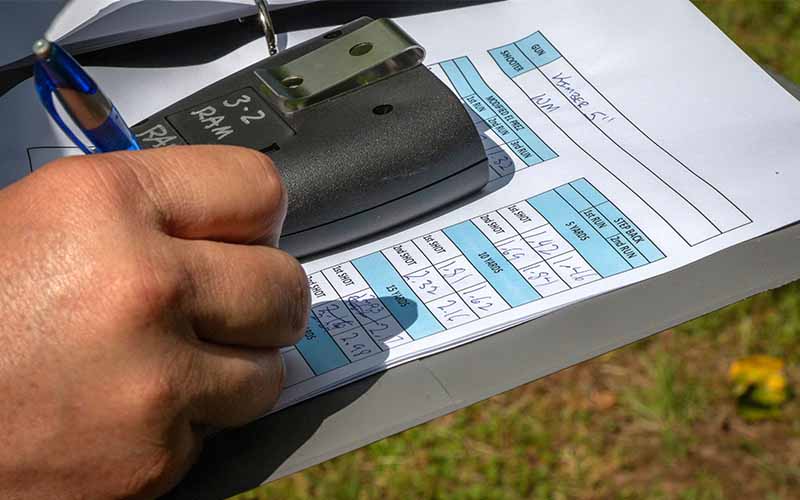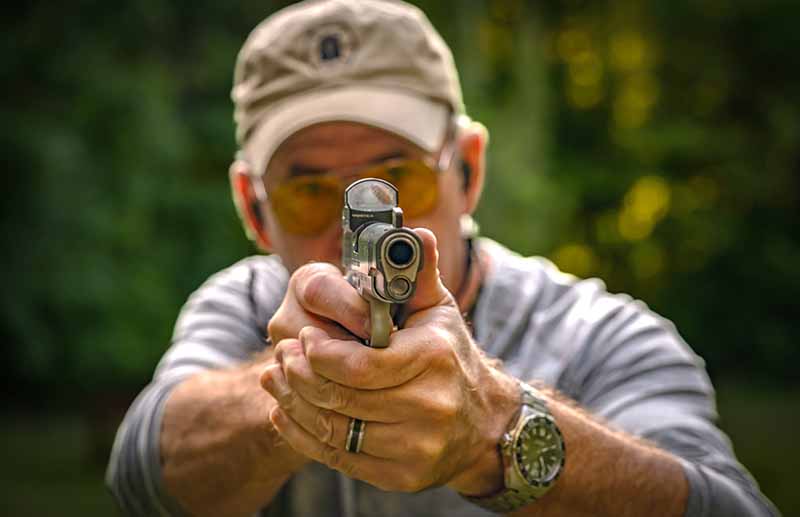Mastering double taps through a proper understanding of hammers and controlled pairs.
It’s thought that the concept of firing two fast shots to stop a threat, also known as a double tap, was first taught by W.E. Fairbairn and E. S. Sykes, around 1944. The history is important but not as important as the logic behind the concept.
Since handguns are notoriously poor at stopping fights, common sense suggests that two hits achieved very quickly are better than one. It should be obvious that two hits will make an attacker bleed more than one hit, and the more an attacker bleeds, the sooner they’re likely to become incapacitated. However, because the effects of bullet wounds are very complex things, it cannot be said with any certainty that two hits are twice as effective.

Wounding speculation aside, the delivery of two quick shots has evolved into the standard response that’s generally taught by self-defense firearms instructors for law enforcement, military and civilians. Of course, if two is better than one, then three and four shots are better than two, but time on target must be considered. If you’re faced with multiple threats that need to be shot, it wouldn’t be wise to spend too long attempting to neutralize just one of them. Two quick shots at each, with immediate re-evaluation and continued engagement as necessary, makes sense.
But what if there’s only one threat? In that case you could—and probably should—continue to shoot the threat until it’s no longer a threat. This makes perfect sense for the military, but for law enforcement and civilian self-defense application, there might be some difficulty convincing a jury that emptying a 15-round magazine into the perpetrator was an absolute necessity.
This brings us back to the standard response concept: If you obtain two quick hits and the threat still exists, then firing additional rounds seems much more justified.
Subtleties Of The Double Tap
As interesting as the history, legality and common sense associated with the double tap might be, from a training standpoint, the terminology has gotten confusing. According to my friend Sheriff Jim Wilson, when Jeff Cooper was developing the Modern Technique of the Pistol, he incorporated the double tap into the training program.
Ultimately, Cooper redefined the concept with the terms “hammers” and “controlled pair.” Both are examples of two quick shots, but with hammers you only see a sight picture before the first shot. With a controlled pair, you see a sight picture before each shot. The reality is that hammers and a controlled pair are both double taps—the practical difference is how they’re executed.
For example, using a version of my step-back drill, I recently conducted a test using multiple handguns by firing two quick shots at an 8-inch target—from the holster—at 5, 10, 15, 20 and 25 yards. The timed results established my shot cadence at each distance.
For example, my average time between shots at 5 yards was 0.35 second, at 10 yards it was 0.63 second, at 15 yards it was 0.86 second, at 20 yards it was 1.09 seconds and at 25 yards it was 1.38 seconds. Interestingly, each additional 5 yards added—on average—a quarter of a second to my split times.
At 5 yards, I only saw a sight picture before the first shot. At 10 yards it was mostly the same, with what I’d call about a 50 percent sight picture before the second shot. At 15 yards and beyond, the only way I could obtain consistent hits, quickly, was to see a sight picture before each shot.
According to Cooper’s definition, at 5 yards and maybe 10 yards, I was shooting hammers, but beyond 10 yards I was executing a controlled pair. Time matters, but with regard to whether I was executing a hammer or a controlled pair, time isn’t the determining factor … it’s whether I was obtaining a sight picture for each shot I fired.
Simplify Your Shooting
With all the respect due to Cooper, who more than anyone else established the foundation for the application of the defensive handgun, it doesn’t have to be that complicated. Regardless of what you want to call it, it’s the execution of two accurate hits as fast as they can be obtained, and, it’s a double tap! Distance, target size, skill level and the handgun used will determine how many sight pictures a shooter must see, and it will be different for everyone.

Let’s just be realistic about what’s expected: If someone tells you to execute a double tap on an 8-inch target at 25 yards using a handgun, unless you’re Jerry Miculek or Bill Jordan—reincarnated—you’re going to have to see a good sight picture for both shots. The fact that you were instructed to conduct a “double tap” simply means you’re shooting two shots as fast as you can get two hits.
Ultimately, with practice, you’ll be able to get two fast hits at ever-increasing distances without having to obtain a sight picture for the second shot. Similarly, at very close distances, you might not even need a sight picture for either shot. At 3 yards, I can easily put two shots inside an 8-inch circle without using the sights at all. However, if you reduce the target size to 4 inches, I have to find the sights to get my hits.
Some say the advantage to hammers is pure speed, but the object with both hammers and a controlled pair is speed. I don’t see the need to complicate the exercise with different definitions when the end goal is the same.
The time it takes you to do that will be different for everyone, as will be the factors that determine how much you need to use your sights to make it happen. As a practitioner of the defensive handgun, your goal must be to emulate the advice of Clint Eastwood’s character Harry Callahan in the movie Dirty Harry: “A man’s got to know his limitations.”
Editor’s Note: This article originally appeared in the December 2023 issue of Gun Digest the Magazine.
More On Defensive Handgun Skills:

Next Step: Get your FREE Printable Target Pack
Enhance your shooting precision with our 62 MOA Targets, perfect for rifles and handguns. Crafted in collaboration with Storm Tactical for accuracy and versatility.
Subscribe to the Gun Digest email newsletter and get your downloadable target pack sent straight to your inbox. Stay updated with the latest firearms info in the industry.

